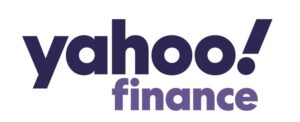By Lauren Steffens
I’ve been taking part-time graduate classes, but am seeking to enter a program full-time. I’m also working part-time, so the cost of applications is weighing on me.
I am applying to MFA programs – master’s in fine arts. Because there are only a few doctoral programs in art, an MFA is considered a terminal degree, so you can teach on the collegiate level, which is one of my goals.
First thing, from a financial perspective, is to look at the length of a program. Some are two years, others are three. According to the National Center for Education Services, a two-year master’s degree program would run $27,600 to $72,600 and a three-year program would be $41,300 to $108,900. Obviously, the quality of a program is a consideration, as a degree from a higher-ranked program would leave to higher job offers in the future.
While you are comparing costs, do look at fees. Many universities are wary of tuition comparisons, so they raise fees rather than raise tuition. Art is also a supply-intensive major, so that adds to the cost. At the Pratt Institute, a prestigious art school, fees include technology, shop safety class fee, student health service and other fees that run into the hundreds of dollars. Pratt charges a per credit hour fee for graduate students of $1,647 per credit hour, so if you take 12 credit hours, it will run $20,000 for the semester. Pratt is located in Brooklyn, cost of living is a consideration as well.
The next thing to check is whether the school offers assistantships. This basically means that in exchange for teaching undergraduates, or assisting a professor in research or teaching, you get a partial or full tuition waiver. In addition, there are monthly stipends to offset other living costs. Some programs give funds toward health insurance, as well.
And lastly, there is financial aid. Schools like Yale University are expensive, and first-year students are not allowed to be teaching assistants. However, about 80 to 90 percent of MFA students receive financial aid.
The bottom line on comparing costs, then is to look at your personal bottom line. While public universities may be cheaper, private universities have larger endowments and likely offer more financial aid to offset the high cost. The reason public universities are cheaper is that they receive taxpayer funding.
While other majors have to take the GRE or other entrance exam, portfolio submission is what artists and writers do.
Now, to start at the beginning – application fees. You need to apply to five or six MFA programs to weigh offers. Application fees can range from $10 (really!) to $200. Of course, these are non-refundable. In addition, I’ve had to pay for a professional photographer to create my electronic portfolio. Art needs to carefully lit and photographed to exacting specifications for the admissions committee to consider. Snaps with your smartphone just don’t work!
So, wish me good luck. I’m on the road to my MFA!
Lauren E. Steffens is a part-time graduate student at the University of Missouri. She holds a BFA in art and a bachelors of journalism from Mizzou.





